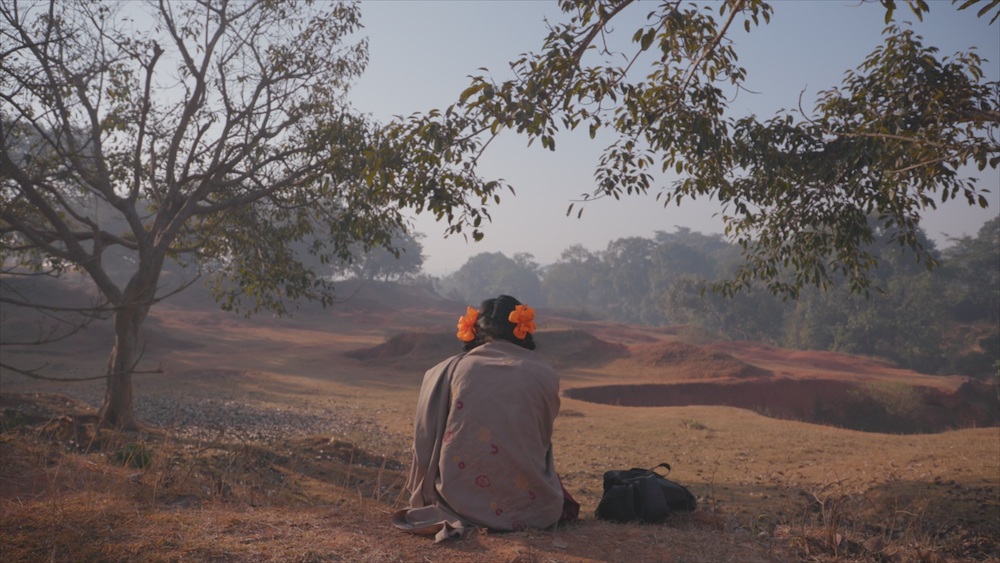Heavy Doc About Justice in Modern India
The rare documentary that opens not just with a content warning, but with a request not to share identifying images of its child subject, To Kill a Tiger is a heavy but necessary work about the legalese and cultural attitudes surrounding sexual violence in rural India. The Oscar-shortlisted doc from New Delhi-born director Nisha Pahuja is a powerful and risky example of the vitality of modern nonfiction filmed in South Asia. It joins recent films like “All That Breathes,” “Against the Tide,” “While We Watched” and “A Night of Knowing Nothing,” which fill the narrative gaps too often left by mainstream Indian fiction, while adopting — and in many ways, re-invigorating — the visual language of traditional drama.
Much of the film follows Ranjit, the father of a 13-year-old survivor of a brutal gang rape, as he searches for justice for his daughter in their village in the eastern state of Jharkhand. However, the approach taken by Pahuja and cinematographer Mrinal Desai is less in the traditional “talking head” vein, and more akin to an intimate drama. Its gentle, piercing closeups make us familiar with Ranjit’s soulful eyes, as well as his receding and graying hairline over the several years the movie unfolds, as he battles economic hardship and social ostracization.
His daughter, “Kiran” (name changed for her protection) is introduced with a similar sense of intimacy, albeit through child-specific details, like the schoolgirl ribbons in hair. Her face does appear in the documentary, a decision taken with her approval once she turned 18 — the movie took eight years to make — but the film never feels as though it’s intruding on her story. Although Pahuja asks numerous questions of all her adult subjects, she lets silences fill the space when interviewing Kiran, allowing her to find strength and bravery in her own time.
That Kiran appears on screen at all feels like a defiant act, given the events she recounts, and the subsequent threats her family faces. At one point in the film, local villagers even descend upon the camera crew and object to their constant filming. No assaults or threats are recorded firsthand, but the very image of a local leader entering Ranjit’s home to politely interrogate the filmmakers feels like a dangerous invasion, given the sense of comfort and safety with which Pahuja portrays his four walls, often lit by gentle sunlight pouring in from outside.
This is perhaps the most important element of “To Kill a Tiger”: the familial love and support afforded to Kiran amidst a culture of shame. Kiran’s mother features in the movie too, offering warmth and encouragement, but the tale of an Indian father believing his daughter (and risking it all to protect her) feels depressingly novel, and this rarity makes it all the more vital.
Numerous women’s rights activists, both men and women alike, weave in and out of the story, not only to assist in Kiran’s court case, but to educate and liaise with the villagers in order to begin rooting out their culture of victim blaming. As it happens, these activists and their efforts were the movie’s original subjects (when the project was titled “Send Us Your Brother”), until Pahuja found Ranjit and Kiran. By zeroing in on their story, the film transforms the specifics of their struggle into universalities both dispiriting and aspirational.
Some of the interviews with Ranjit and Kiran’s detractors — local village leaders who feel the matter could’ve been handled internally, by marrying Kiran off to one of her assailants — are enraging to witness. Pahuja’s muffled, un-mic’d voice is heard on occasion, but her restraint in responding allows these interviewees to arrive at intriguing revelations. The perpetrators’ defense attorney, for instance, concludes her tirade about Kiran’s culpability with a stunning admission that hints at a deeper social malaise: that she wouldn’t even trust her own son around a girl.
“To Kill a Tiger” reaches no enlightening conclusions about Indian masculinity, let alone solutions about rooting out its most dangerous tenets (beyond depicting activists holding public forums). Such a task, spanning a country of more than a billion people with a deluge of unreported assaults, would be too herculean for any one film. It’s arguably the movie “Send Us Your Brother” would have tried to be, but in following the tireless travails of one loving father and his valorous teenage daughter, “To Kill a Tiger” depicts a shining, poignant example of the difference individuals can make in altering the social fabric.

